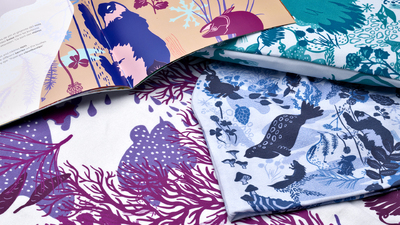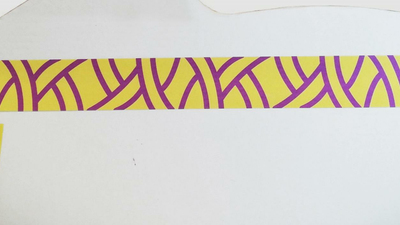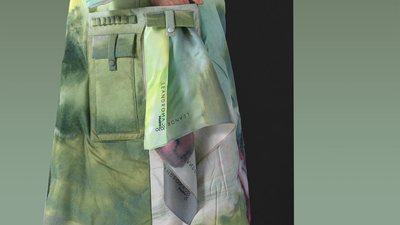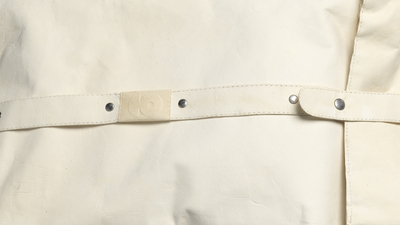MOWO, move with wood
The idea
It all started with the application for a Masters in Furniture Design at UAL, Central Saint Martins in 2016. All students had to apply with a project proposal - I came up with the idea of a ‘soft wooden chair’. I had this fantasy of a seat that’s made out of wooden materials but feels springy and elastic, almost like a sofa, when you sit down on it. I guess I was inspired by a sofa I had sat down in a shop when I was young, which ever since defined the ultimate comfort level for me, and some experiments with wood veneer I had done during my studies in architecture. Growing up in Austria, a country with big forests, wood is deeply routed in our culture, which is why I was always drawn to working with the natural and truly sustainable material.
The birth of the project
The beginning of my design journey was very research focused. While experimenting with different materials in the workshop I also dived into the studies of ergonomics. The fact that the interaction between the seat and the user’s body, is not only an indicator of comfort but can also affect our body’s health, became a main driver for the design process.
Especially nowadays living in a technological era, people tend to spend up to 10 hours per day seated. The way HOW we sit has become most important as long-term sitting, also defined as the ‘new smoking’, has been the main cause for back pain and other muscular diseases.
The MOWO collection is based on a modern theory of ergonomics, which claims that the human body is not made for standstill and that regular movement is better than trying to fixate the body in one position. This is how the concept of ‘move with wood’ was born. Sitting on a MOWO stool is not only playful and fun but also keeps our bodies active as the wobbly structure reacts and supports every movement of our bodies.
The challenge was to create the right type of plywood, thin enough to bend and twist when charged but stable enough to withstand higher loads.
The creative process
After an intensive phase of material research and experimenting I realised that plywood was the only wooden material that allowed me to create an elastic structure without the need of any additional stretchy materials or joints. I started sketching ideas and transferring them into small scale paper models.
In the beginning of the design process I was working on the soft woven wooden structure, what later became the Area mat. I remember not everyone believed in the feasibility of the idea. The head technician of the wood workshops at university, for example, had prophesied that it wouldn’t be possible to create a curved plywood element that kept its shape after applying maximum pressure. One day later I demonstrated the first successful material test to him - I will never forget his face.
The creation of the first plywood stool was a lucky incident. Its shape was based on a paper model and when I first sat on the wooden prototype it didn’t perform anything like I expected. However, I quickly realised that the unknown features of the bendy stool were actually more useful than the predicted ones as they supported a full body movement and made the sitting experience super fun!
For more than one year I spent almost 5 days a week in the wood workshop and was soon known as the ‘plywood queen’ amongst my co-workers. I highly value this time as it was allowed me to truly get to know the material and all its facets. By the end of the two years course, I had created a collection of 4 stools and 1 bench.
The collaboration
Working together with Tamas and his moulded plywood manufacturing company was a big chance and allowed me to develop the collection further and optimise the design for mass production. Through the collaboration, I gained highly valuable insights into the possibilities and constraints of production at high volume.
On the other hand, I challenged him and his team by asking for a complicated press tool that was able to produce plywood shapes with high curvatures and a minimal material thickness, unlike anything THEY had ever done before. The design of the press tool required various iterations and until today is not completed. But working on an innovative product and material takes time - I’m staying positive and believe we will succeed to produce the unusual thin and bendy plywood products in the next year.
The future
The long-term plan for the future is to establish MOWO as a young and modern furniture brand, offering a wide range of fun objects out of moulded plywood advocating a healthy and active way of living.
We’re envisaging a direct business to consumer sales strategy that cuts out retails to make the products affordable for a wider market. Instead of retail shops customers will be able to test the products in public spaces around the city, starting in my home bases Vienna and London, that will function as ‘organic’ showrooms.
As soon as all manufacturing issues at Licit are solved we will prepare a Kickstarter campaign that will function as a pre-sale campaign to finance the order of the first badge production.
Additionally, we will apply for the funding program ‘creative to market’ by the Vienna Business Agency to finance a wide marketing and PR campaign.
The message
I truly believe in the benefit of ANY collaboration. Mixing the expertise and viewpoints of two persons or parties can only bring a more open and informed way of thinking which will contribute positively to the development of a project.
I’d say there are three key ingredients for a successful collaboration - curiosity, flexibility and communication. Curiosity is key and the start of the partnership. Flexibility, in this case the willingness to adapt one’s design to the needs of someone else, needs to be there. Good communication between the parties can be the biggest difficulty, especially when dealing with big companies, in which case deadlines need to be set or time frames adjusted.






















































































